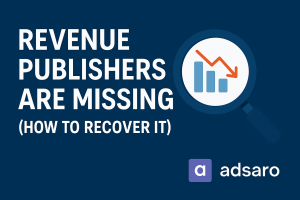Achieving High ROI with Targeted Advertising
In the competitive realm of e-commerce, maximizing return on investment (ROI) through targeted advertising is paramount. This case study explores how an e-commerce company specializing in high-end fitness equipment overcame challenges of market saturation and budget constraints to drive significant sales growth.
By leveraging precise audience research, strategic campaign deployment across digital platforms, and continuous optimization based on robust analytics, this study exemplifies the power of targeted advertising in achieving substantial business outcomes efficiently and effectively.

Client:
An e-commerce company specializing in high-end fitness equipment.

Objective:
Increase sales and maximize return on investment (ROI) through targeted advertising.

CHALLENGES
- High competition in the fitness equipment market demands precise targeting to reach potential buyers effectively.
- Need to target a specific, high-intent audience while working within a limited budget to ensure efficient allocation of advertising spend.
:

Strategy
To achieve these objectives effectively, implement the following targeted advertising strategies:
Audience Research and Segmentation : Targeted advertising for high ROI
Steps Taken:
- Thorough market research to understand the demographics, interests, and online behaviors of the target audience.
- Development of detailed buyer personas to represent ideal customers based on insights gathered.
- Segmentation of the audience into specific groups considering factors like age, gender, fitness goals, and purchasing power.
Results:
- Precise targeting and messaging tailored to each audience segment, enhancing relevance and engagement.
- Improved ROI by focusing advertising efforts on segments most likely to convert.
Search Engine Advertising : Targeted advertising for high ROI
Steps Taken:
- Launch Google Ads campaigns targeting high-intent keywords related to fitness equipment.
- Utilize a mix of broad match, phrase match, and exact match keywords to capture different levels of user intent.
- Implement ad extensions such as site links and callouts to provide additional information and enhance CTR.
Results:
- Increased website traffic from users actively searching for fitness equipment.
- High conversion rates due to targeting users with strong purchase intent.
Social Media Advertising
Steps Taken:
- Run targeted ad campaigns on Facebook and Instagram, leveraging detailed audience targeting capabilities.
- Create engaging ad creatives, including carousel ads and video ads showcasing fitness equipment in use.
- Utilize lookalike audiences to reach new potential customers similar to existing high-value customers.
Results:
- Enhanced brand awareness and engagement on social media platforms.
- Achieved high CTR and conversion rates through the effective use of lookalike audience campaigns.
Display Advertising and Retargeting
Steps Taken:
- Utilize Google Display Network (GDN) to reach a broader audience across various websites.
- Implement retargeting campaigns to re-engage users who visited the website but did not complete a purchase.
- Display personalized ads featuring products users previously viewed or added to their cart.
Results:
- Increased conversions from previously engaged users through effective retargeting strategies.
- Achieved lower CPA for retargeted users compared to new user acquisitions.
A/B Testing and Continuous Optimization
Steps Taken:
- Conduct A/B tests on ad creatives, headlines, and CTAs to identify the most effective variations.
- Regularly monitor campaign performance and make data-driven adjustments to bids, targeting, and budgets.
- Optimize landing pages for improved user experience and higher conversion rates.
Results:
- Continuous improvement in ad performance metrics including higher CTR, lower CPC, and increased conversions.
- Enhanced landing page conversion rates through iterative testing and optimization.
Analytics and Performance Tracking
Steps Taken:
- Utilize Google Analytics and ad platform dashboards to track and analyze campaign performance.
- Set up conversion tracking to measure sales and other key actions taken by users.
- Generate regular performance reports to identify trends and derive actionable insights.
Results:
- Data-driven insights enable informed decision-making and strategic adjustments.
- Clear visibility into ROI and campaign effectiveness guide future advertising strategies.
OUTCOMES
Overall Results:
- Sales Increase: Achieved a 40% increase in sales over six months.
- ROI Improvement: Increased ROI from advertising campaigns by 50%.
- Cost Efficiency: Reduced CPA by 30% through targeted advertising and retargeting strategies.
Key Takeaways:
- Precise audience targeting and segmentation are critical for maximizing ROI in advertising campaigns.
- Integration of search engines, social media, and display advertising ensures comprehensive reach and engagement.
- Continuous testing and optimization lead to sustained improvements in campaign performance.
- Effective use of analytics and performance tracking drives data-driven decision-making and strategic adjustments.
Conclusion
This case study demonstrates the significant impact of a well-executed targeted advertising strategy in achieving substantial sales growth and maximizing ROI. By understanding the target audience deeply, leveraging diverse advertising platforms effectively, and continually optimizing campaigns based on performance data, businesses can achieve remarkable success in their advertising endeavors.








Leave a Reply